Last updated on August 23rd, 2024
It is a universal truth that people coming to Agra often come to see the Taj Mahal, but it is also true that Agra Fort has its own charm. When we had planned to go to Agra, it was only to see the Taj Mahal. But we just found out that apart from the Taj Mahal, Agra also has amazing monuments which attract the attention of the visitors. And one of those splendid attractions is Agra Fort. Agra Fort, also known as the Red Fort, Qila-e-Akbari, or Qila Rooj, is a Mughal architectural tradition treasure trove.
Agra Fort Architecture
Agra Fort is situated on the right bank of River Yamuna and is only 2.5 kilometers away from the world-famous Taj Mahal. So if you are planning to visit Agra then must go for Agra Fort as this place holds within itself wonderful memories of history. After 3 hours of journey, we reached Agra Cantt at 1 pm. We gave our first day to the Taj Mahal. Not only us but I think almost everyone wants to visit the Taj Mahal first. So the next day, we planned to visit the Agra Fort. Our hotel was just a few km away from the Taj Mahal and Agra Fort. So after having some refreshments we hopped on an e-rickshaw and went to visit the incredible Agra Fort.
For better convenience, you should book your hotel near the Taj Mahal. So you can enjoy nearby places with easy-going.
Agra Fort is built entirely of Redstone which is the perfect combination of Mughal-style art and architecture. The fort complex houses some of the finest Mughal architecture such as the Pearl Mosque, Diwan-e-Aam, Diwan-e-Khas, Moti Masjid, Jahangiri Mahal, etc. There are many guides available at the fort and I would like to say that you should definitely hire a guide so that he can take you through all the stories and intricacies of the history. We entered the fort with tickets, hired a guide, and then began the tour of Indian Mughal History.
History of Agra Fort

This fort is believed to be before the 11th century as the existence of this fort is mentioned in many literatures and inscriptions of the 11th century. It was a brick building under the control of the Rajputs and was named Badalgarh. In the 16th century, when Mughal Emperor Akbar took over the fort, the fort was in ruins. Akbar rebuilt it with red stones and renovated it as an aesthetic monument. It took eight years to complete this huge fort and it got the name of Agra Fort.
Then Akbar’s grandson, Shah Jahan, deliberately demolished many structures to make way for marble structures within the fort. Later Shah Jahan’s son, Aurangzeb captured the fort and imprisoned him in the same fort. It is said that Shah Jahan insisted on confining himself in a minaret inside the fort so that he could spend the rest of his life beholding the Taj Mahal from the minaret. Under the control of Aurangzeb, he didn’t make changes to the structure of the fort. To increase security, trenches were made in the walls. After the death of Aurangzeb, Agra came under the control of the Marathas. Then, one after the other, the fort was controlled by many dynasties, but they made little to no changes in the structure of the fort.
Later, the British captured the fort and used it for military purposes until independence. Britishers established barracks inside the fort and destroyed many monuments to make space for the army. After Independence, the fort came under the control of the Government of India.
Related Post: Places to Visit in Agra
Agra Fort Entrance
There are four entrance gates in Agra Fort and two of them are walled. Only the southern gate is open for tourists. The North Gate is under the control of the Indian Army and is used by them. The Southern Gate is called Amar Singh Gate. During the reign of Akbar, this gate was called Akbar Darwaza.
What Attractions Inside the Agra Fort
Jahangir’s Palace
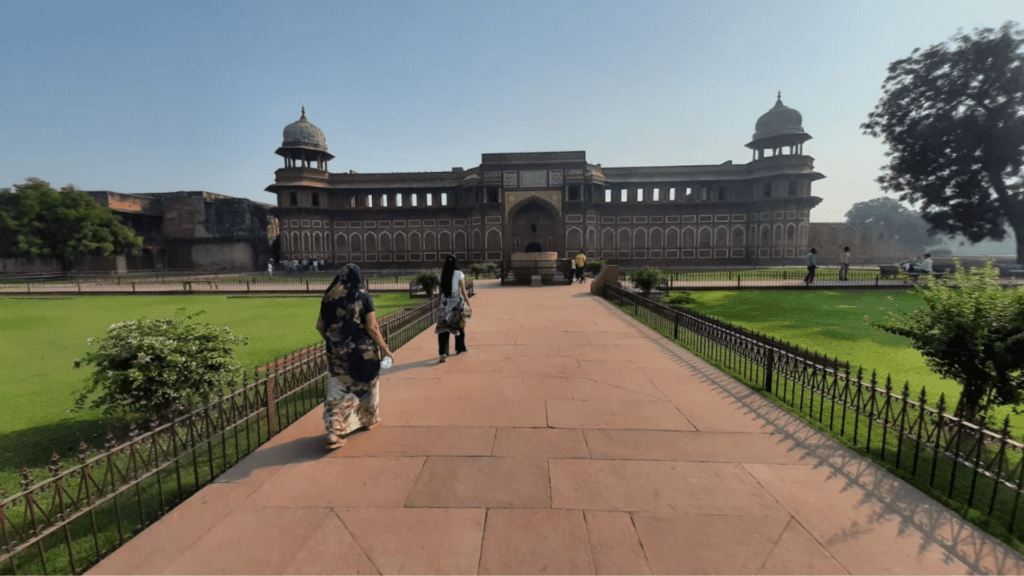
Jahangir’s Palace is the most notable structure and the oldest palace of the Akbari period in Agra Fort. This fort was mainly used by the royal women (Akbar’s Rajput Wives). It has a magnificent gateway leading to an inner courtyard, surrounded by grand halls covered with intricate carvings and beautiful pillars and crossbeams.
Musamman Burj (the octagonal tower)

It is the place where Shah Jahan was imprisoned by his son Aurangzeb. From this tower, you can get an amazing view of the Taj Mahal. So stop at this place for a while and get mesmerized by the beauty of the Taj Mahal. It is known as the most romantic and attractive pavilion inside the fort.
Shahjahani Mahal
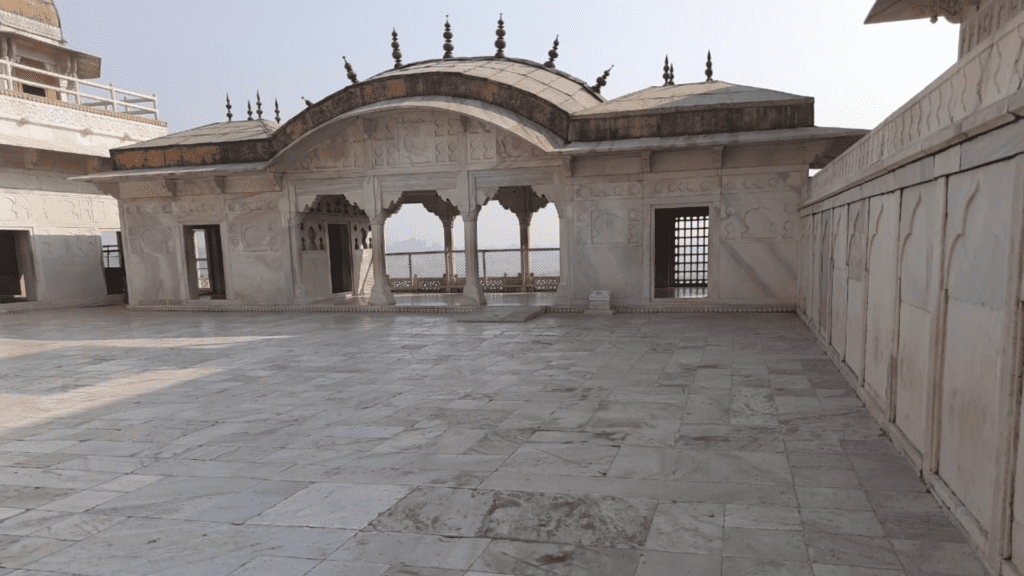
Shahjahani Mahal is made up of white marble. When Shah Jahan destroyed some architecture of this fort he turned a Red stone Mahal into white marble.
Find the best Hotels on Agoda.com
Khas Mahal
A unique example of Persian and Islamic architecture, Khas Mahal is a palace built by Shah Jahan for his wife Mumtaz Mahal. The airy building offers a glimpse of the specially created Angoori Bagh. There are residential quarters for women on three sides of this garden. The palace is known for its intricate architecture such as ceiling art, innumerable glass pieces, central fountain, and lattice works. The interior walls of the palace are decorated with precious stones, gold, and gems.
Diwan-e-Aam
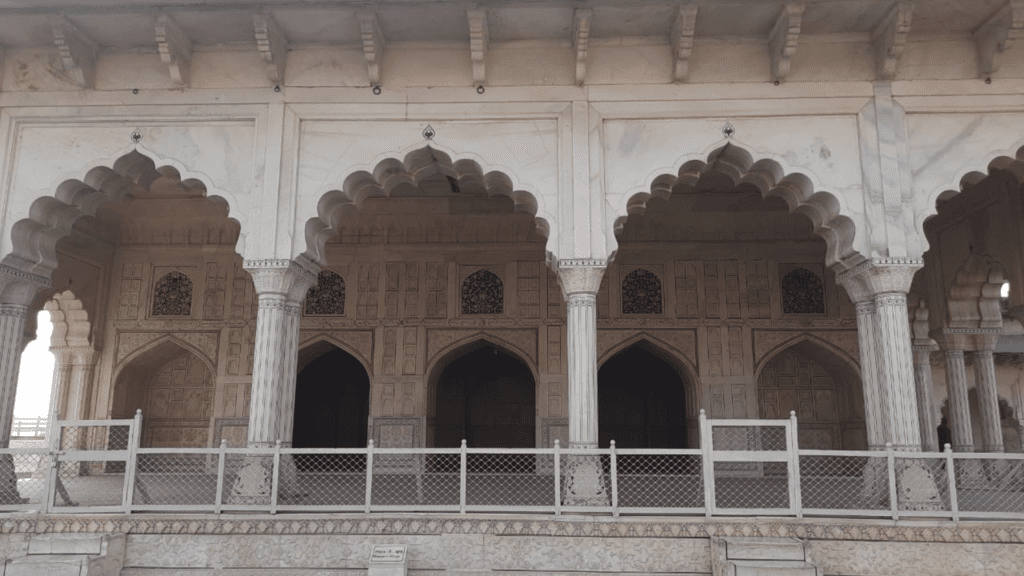
Shah Jahan built this hall. Initially, this hall was made up of red sandstone but later it was plastered with shell-plaster which gave it a white marble look. Shah Jahan used to meet with officials, and common people, and listen to the petitioners at Diwan-e-Aam.
Diwan-e-Khas
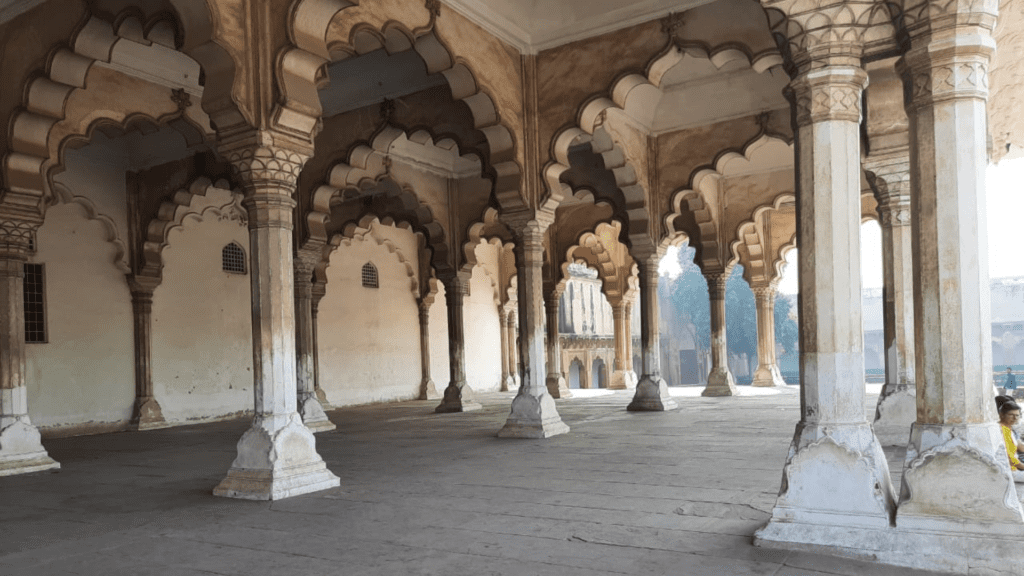
This hall was built by Mughal Emperor Akbar and rebuilt by Shah Jahan. Diwan-e-Khas displays a phenomenon artwork that includes Persian-style decorative work, floral motifs, and marble carvings. Here, the Mughal Emperor used to meet with foreign ambassadors and dignitaries. The famous Peacock Throne had been placed here but was looted from India in the 18th century.
Sheesh Mahal
The palace attracts visitors with its fascinating carvings and intricate mirror work on the walls, which are entirely made up of reflective surfaces. This palace offers a perfect example of glass-mosaic ornamentation in India. It is believed that the Sheesh Mahal was a dressing room of royal women.

Nagina Masjid
Nagina Masjid was built up by Shah Jahan. Here only royal persons of the palaces used to worship. This mosque is completely made up of white marble.
Jahangir’s Chain of Justice
Mughal Emperor Jahangir installed this huge chain on the wall of his palace during his reign to provide justice to the people. This huge chain is made up of gold and has 60 bells attached to it. This was the method of grievance redressal during the reign of Jahangir.
After spending 2 hours at Agra Fort, we left for Agra Cantt Railway Station, as it was our last day in Agra. We had a return train from Agra to Jaipur. When I came out of Agra Fort, I was completely lost in the ancient history of this Fort. I was truly mesmerized by Agra Fort and felt immense pleasure after getting enough information about its rich history.
Find guided tours on Viator.com
Best time to Visit Agra Fort & Entrance Tickets
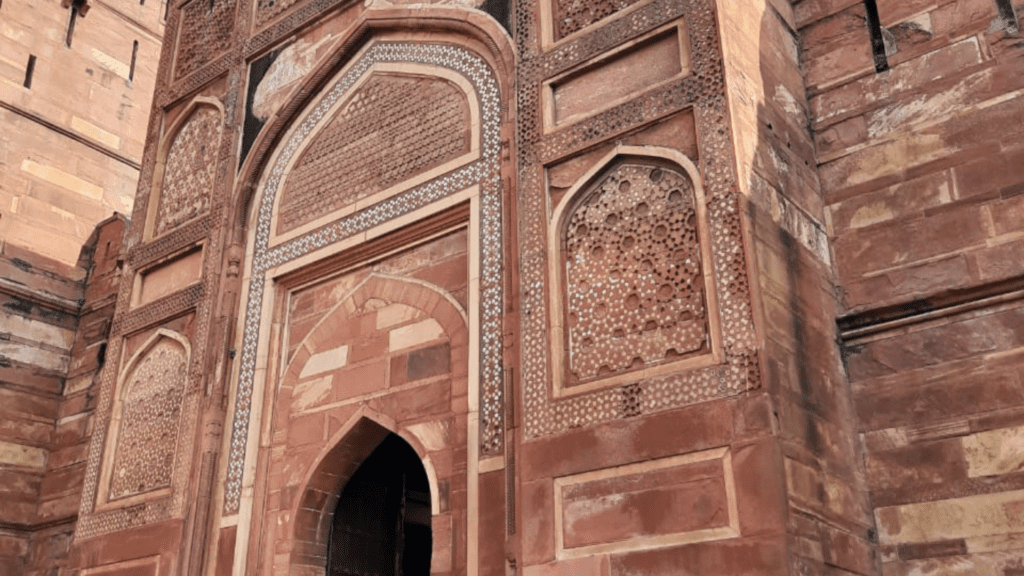
If you’re eager to see Agra Fort, the best time to visit it is sunrise and sunset as the fort is open from sunrise to sunset. If you’re coming to visit this fort then early morning and or late evening is the best time to visit this beautiful fort. We chose early morning to visit this wonderful site. The best season to visit Agra is from Winter to early Summer. Because the weather becomes pleasant and the sky remains clear for convenient sightseeing.
If you want to enjoy the light and sound show that organizes at 7 PM, then must choose the evening time to behold this sight. As people say this fort looks even more beautiful in the evening.
Entrance Ticket Cost for Indians:
- INR 50/- for Adults
- Free- for Children (below 15 years)
- INR 70/- for Light and Sound Show
Entrance Ticket Costs for Foreigners:
- INR 650/- for Adults
- INR 70/- for Light and Sound Show
- Free – for Children (below 15 years)
Where to Eat in Agra
There’s no doubt that Agra is one of the most-visited places in India, so there’s no dearth of food outlets that offer lip-smacking cuisines from veg to non-veg. The street food of the city attracts a large number of tourists throughout the year. We relished on gol-gappas here.
What to Buy in Agra
If you love to eat Agre ka Petha then there are numerous Petha shops where you can buy them for your family or friends. You can also buy Banarasi Sarees and other souvenirs from Uttar Pradesh.
If you are coming only to see the Taj Mahal, then I would like to recommend you must visit Agra Fort. Because this fort contains a lot of history in itself which you will know when you look closely. If you are coming from Delhi or any other nearby places then a train or taxi is the best option.
Did You Like this Ultimate Guide of Agra Red Fort: Everything You Need To Know then please share your views in the comments below. I would love to hear from you. Also, contact me If you need any help in planning your trip to Agra.
Disclaimer: This post contains some affiliate links. That means if you purchase through these links then I will earn some commission, at no additional cost to you. And I can continue bringing you free travel tips and advice. If you found the content helpful and are kind enough to make purchases through my affiliates – A Big Thanks to You!
PIN IT FOR LATER




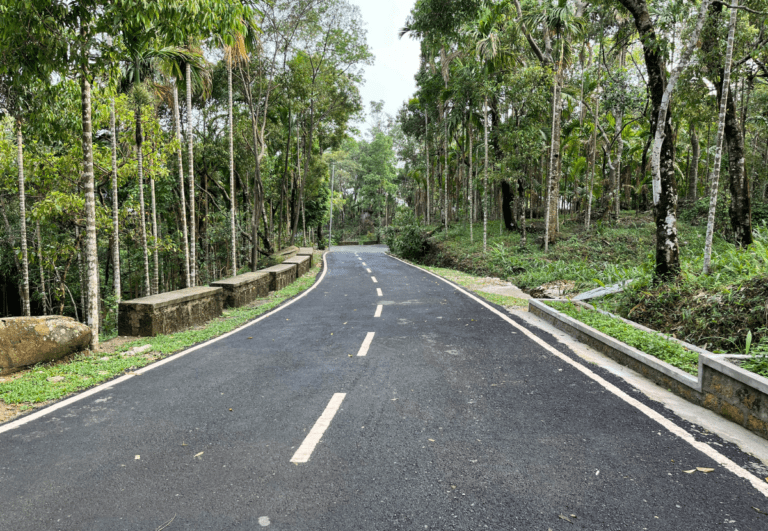
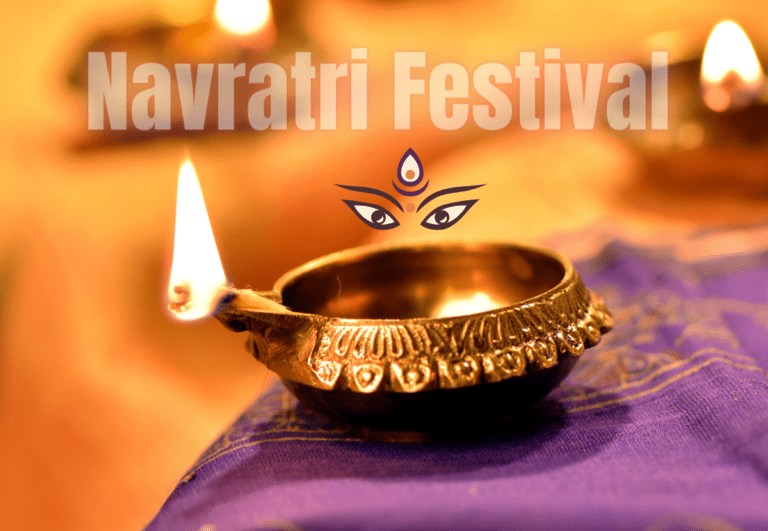

One Comment